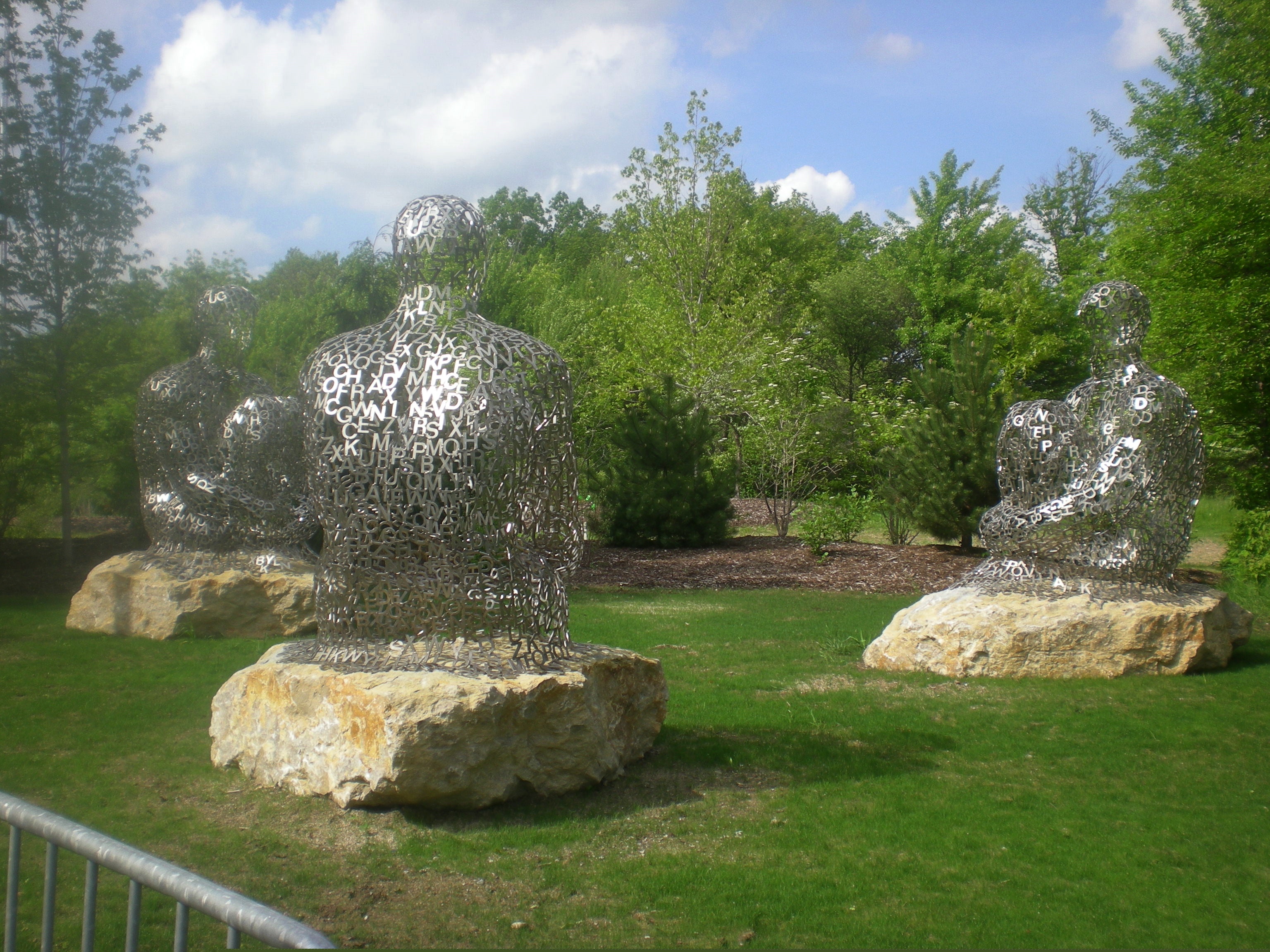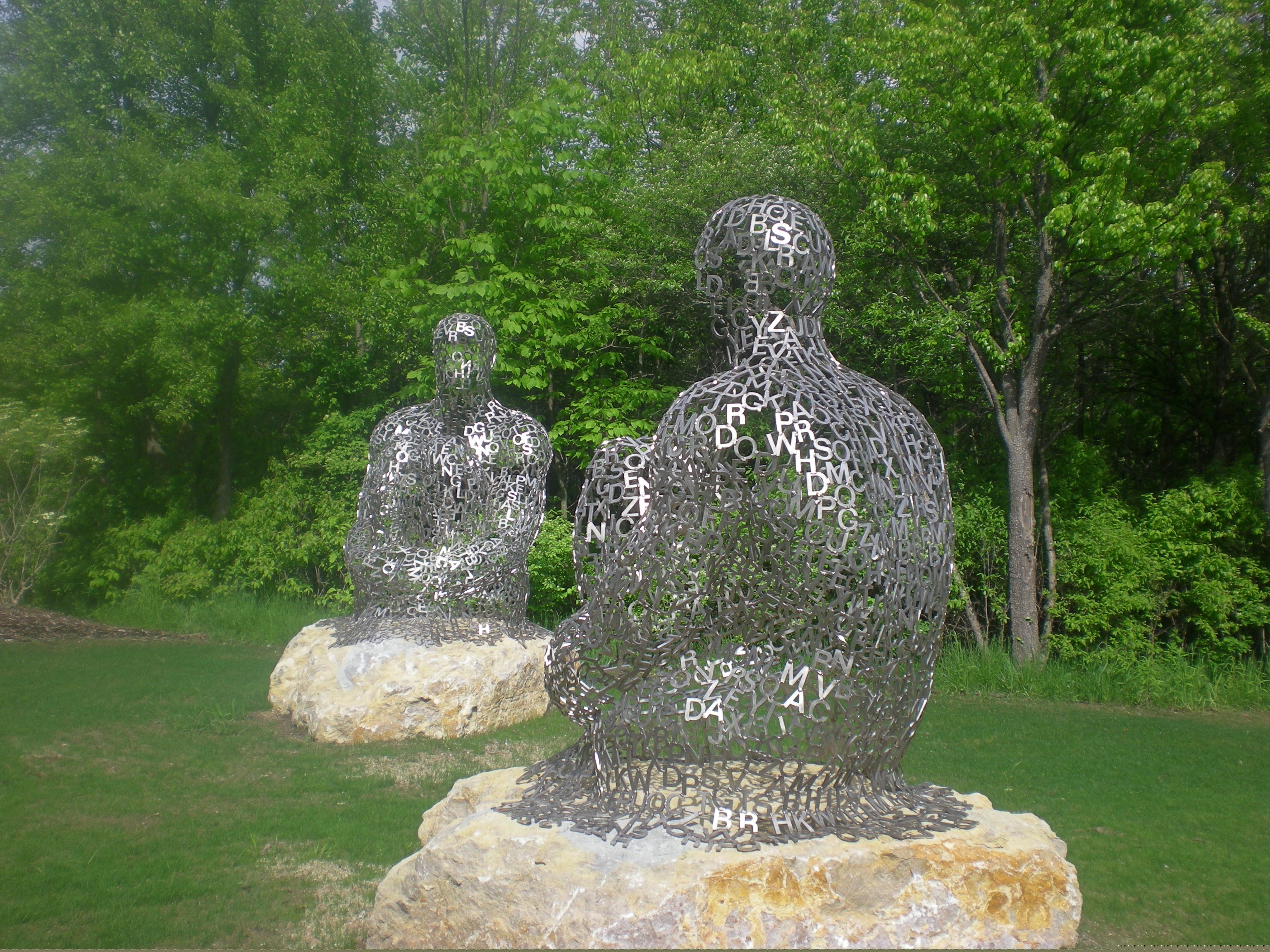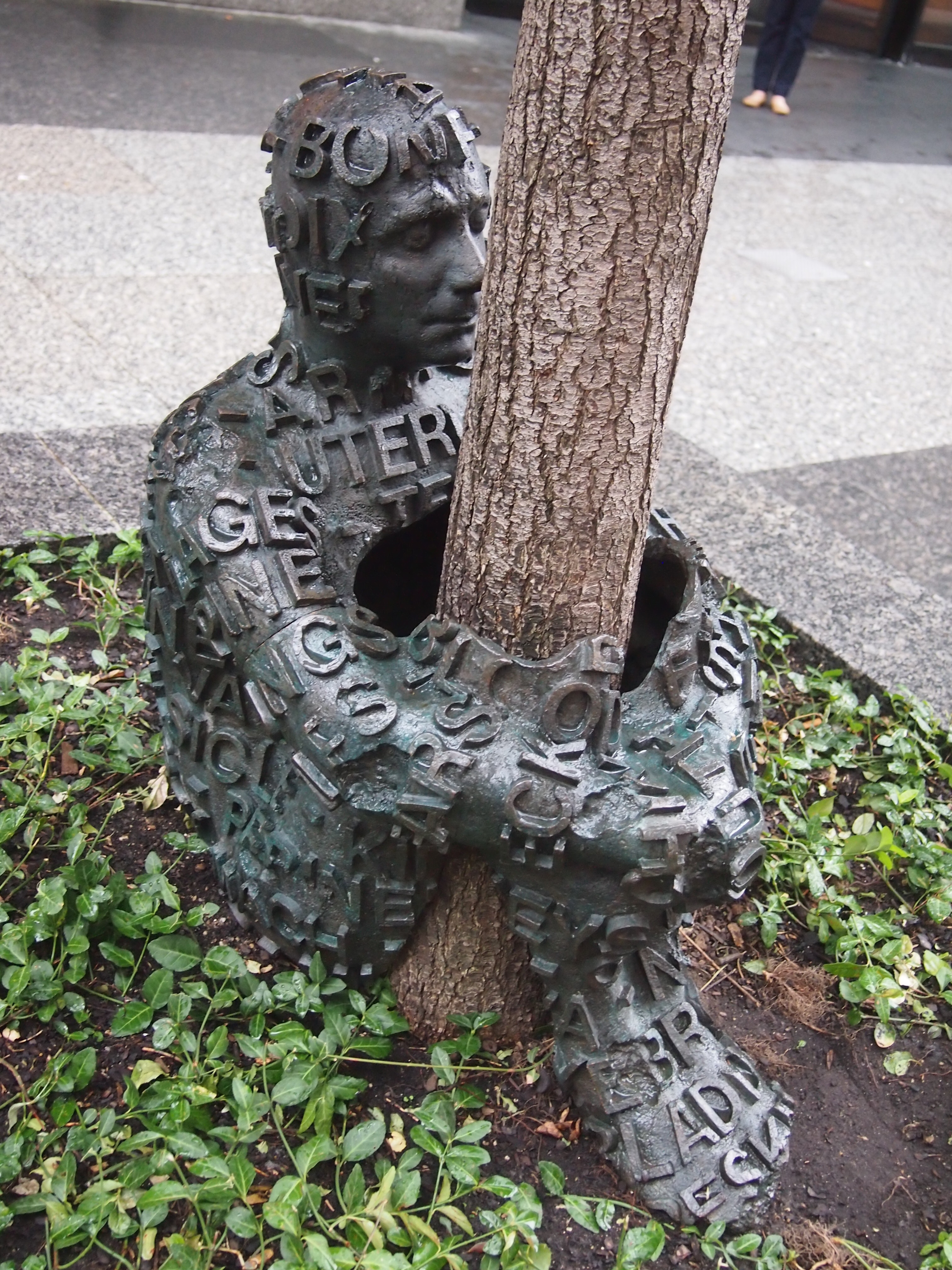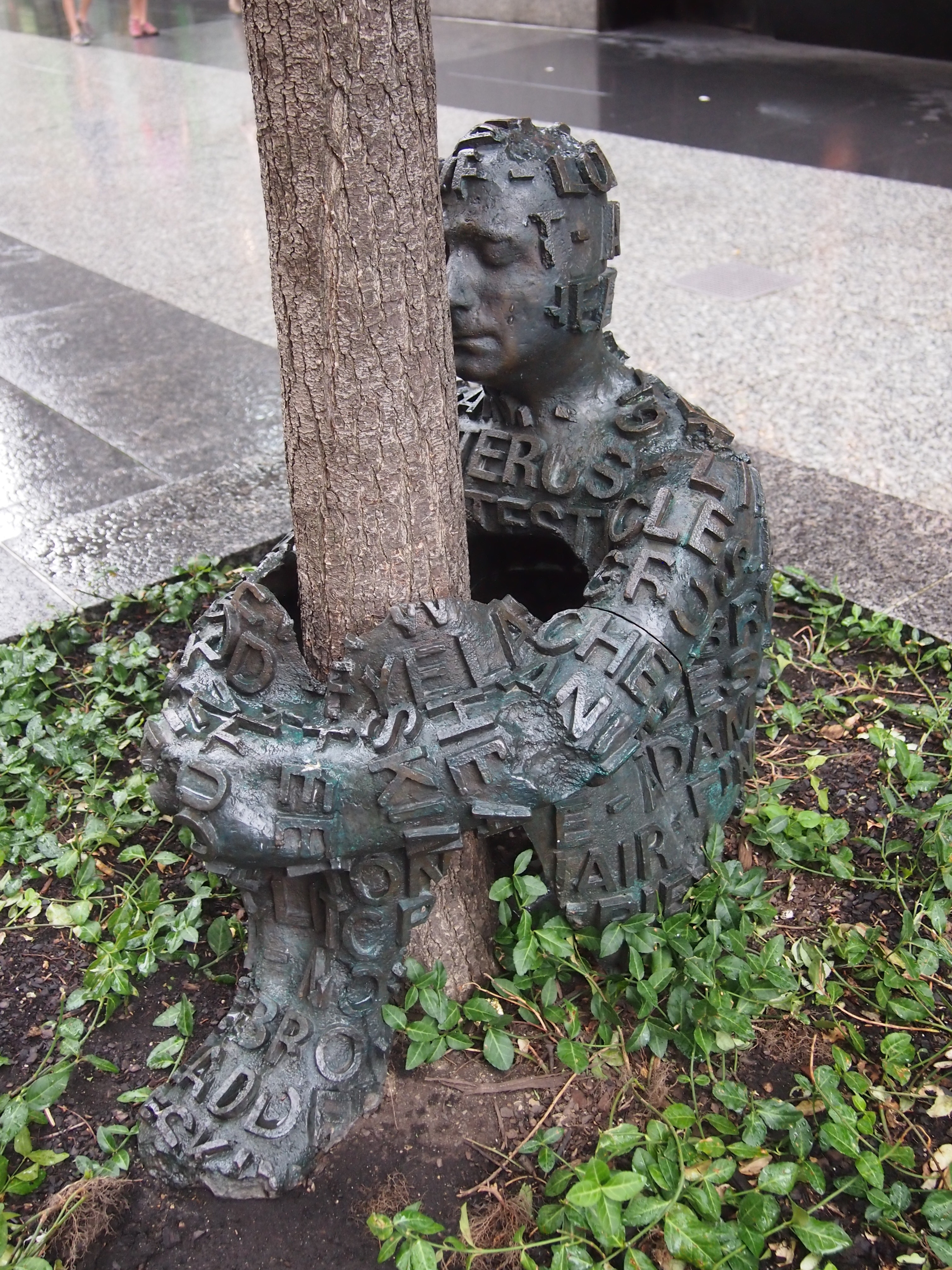Here’s a line from The Sun Also Rises that I didn’t much appreciate until recently. In one of the many conversations among the protagonists, the subject of the character Mike’s bankruptcy is broached:
“How did you go bankrupt?” Bill asked.
“Two ways,” Mike said. “Gradually, then suddenly.”
A lot of things happen that way. Learning often happens that way. Or at least awareness. Fortunately, I don’t have the experience of bankruptcy in mind. Still, a minor example of gradually-suddenly just happened to me.
Back in 2008, we visited the Frederik Meijer Gardens & Sculpture Park in Grand Rapids, Mich. One of the works was by Jaume Plensa, “I, you, she or he…”

 In 2014, I took note of Plensa’s monumental head, temporarily placed in Millennium Park in Chicago, “Looking Into My Dreams, Awilda.” I also knew at the time that the Catalan artist had also done Crown Fountain in the park as well.
In 2014, I took note of Plensa’s monumental head, temporarily placed in Millennium Park in Chicago, “Looking Into My Dreams, Awilda.” I also knew at the time that the Catalan artist had also done Crown Fountain in the park as well.
Interesting that the vitriol against “Dreams” in the comments of this Chicago Reader item obsesses about the size of the head. When I happen across public art, I judge it by an admittedly subjective standard: does it make the space more interesting? By that standard, all the Plensas I’ve seen are successful works.
Today I was looking at pictures I’d taken in August 2013, and happened across these — two images of the same work in Chicago.

 “Self Portrait With Tree,” by none other than Plensa. I’d forgotten about it, and when I took the picture, probably didn’t associate it with the other works of his I’d seen. “Self Portrait” was next to the Hancock Tower on E. Chestnut St. I checked the Street View of that block, dated July 2018, and the work is gone. It was put up by the nearby Richard Gray Gallery, so perhaps it found a buyer.
“Self Portrait With Tree,” by none other than Plensa. I’d forgotten about it, and when I took the picture, probably didn’t associate it with the other works of his I’d seen. “Self Portrait” was next to the Hancock Tower on E. Chestnut St. I checked the Street View of that block, dated July 2018, and the work is gone. It was put up by the nearby Richard Gray Gallery, so perhaps it found a buyer.
All that is the gradual part. Somehow or other, Plensa hadn’t made much of an impression on me over the years. But when I looked at the 2013 images, I suddenly wanted to know more about him, since I don’t make a close study of sculpture or public art. If I had, I would have known how widespread his works are. (Had we walked further along Buffalo Bayou in Houston in May, we’d have come across yet another.)
Is it important that I know this? Maybe, maybe not. But better to err on the side of knowing something, however small.